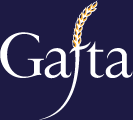History and development
GAFTA can trace its origins back to 1878, when the London Corn Trade Association (LCTA) was established by members of the corn trade to protect their interests. The LCTA sought to achieve this through the adoption of standard forms of contract, drawn up by the association, with any disputes arising out of these contracts being settled by arbitration rather than litigation. Disputes were referred to London and conducted under English Law.
In 1906, a group of traders broke away from the LCTA and formed a new more specialised association, the London Cattle Food Trade Association (LCFTA), for those trading in vegetable proteins used as animal feedingstuffs. In 1965, the LCFTA dropped ‘London’ from its title, reflecting growing internationalisation. In 1969, merger talks commenced between the LCTA and CFTA. The outcome of these talks was the formation of a new joint association, the Grain and Feed Trade Association, in 1971. [2]
In 2008 the International General Produce Association (IGPA) joined the Grain and Feed Trade Association.
GAFTA is headquartered in Holborn, London, and currently operates four more offices, in Beijing, Geneva, Kyiv and Singapore. [2]
This page is based on this
Wikipedia article Text is available under the
CC BY-SA 4.0 license; additional terms may apply.
Images, videos and audio are available under their respective licenses.
